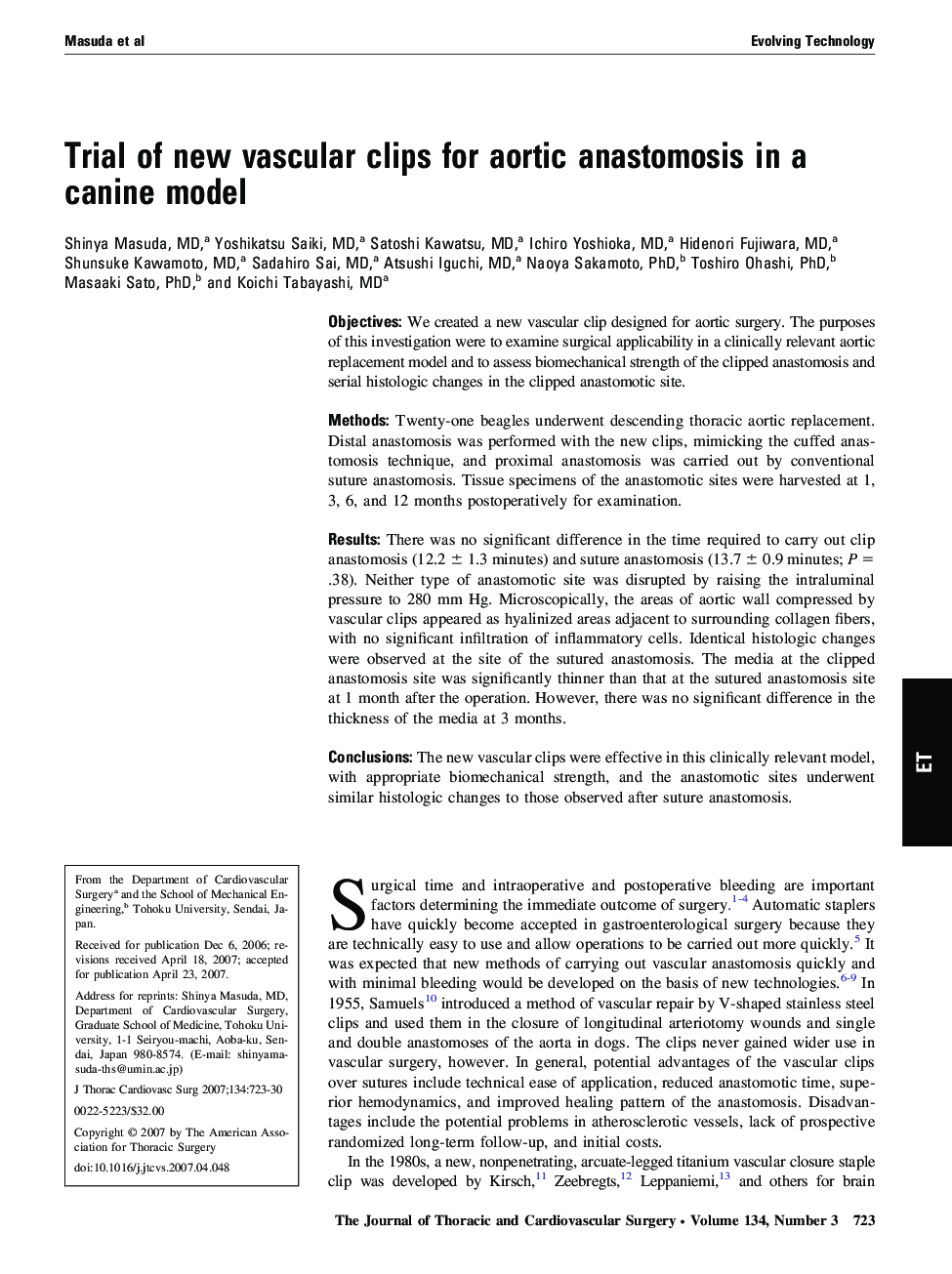| Article ID | Journal | Published Year | Pages | File Type |
|---|---|---|---|---|
| 2985662 | The Journal of Thoracic and Cardiovascular Surgery | 2007 | 8 Pages |
ObjectivesWe created a new vascular clip designed for aortic surgery. The purposes of this investigation were to examine surgical applicability in a clinically relevant aortic replacement model and to assess biomechanical strength of the clipped anastomosis and serial histologic changes in the clipped anastomotic site.MethodsTwenty-one beagles underwent descending thoracic aortic replacement. Distal anastomosis was performed with the new clips, mimicking the cuffed anastomosis technique, and proximal anastomosis was carried out by conventional suture anastomosis. Tissue specimens of the anastomotic sites were harvested at 1, 3, 6, and 12 months postoperatively for examination.ResultsThere was no significant difference in the time required to carry out clip anastomosis (12.2 ± 1.3 minutes) and suture anastomosis (13.7 ± 0.9 minutes; P = .38). Neither type of anastomotic site was disrupted by raising the intraluminal pressure to 280 mm Hg. Microscopically, the areas of aortic wall compressed by vascular clips appeared as hyalinized areas adjacent to surrounding collagen fibers, with no significant infiltration of inflammatory cells. Identical histologic changes were observed at the site of the sutured anastomosis. The media at the clipped anastomosis site was significantly thinner than that at the sutured anastomosis site at 1 month after the operation. However, there was no significant difference in the thickness of the media at 3 months.ConclusionsThe new vascular clips were effective in this clinically relevant model, with appropriate biomechanical strength, and the anastomotic sites underwent similar histologic changes to those observed after suture anastomosis.
